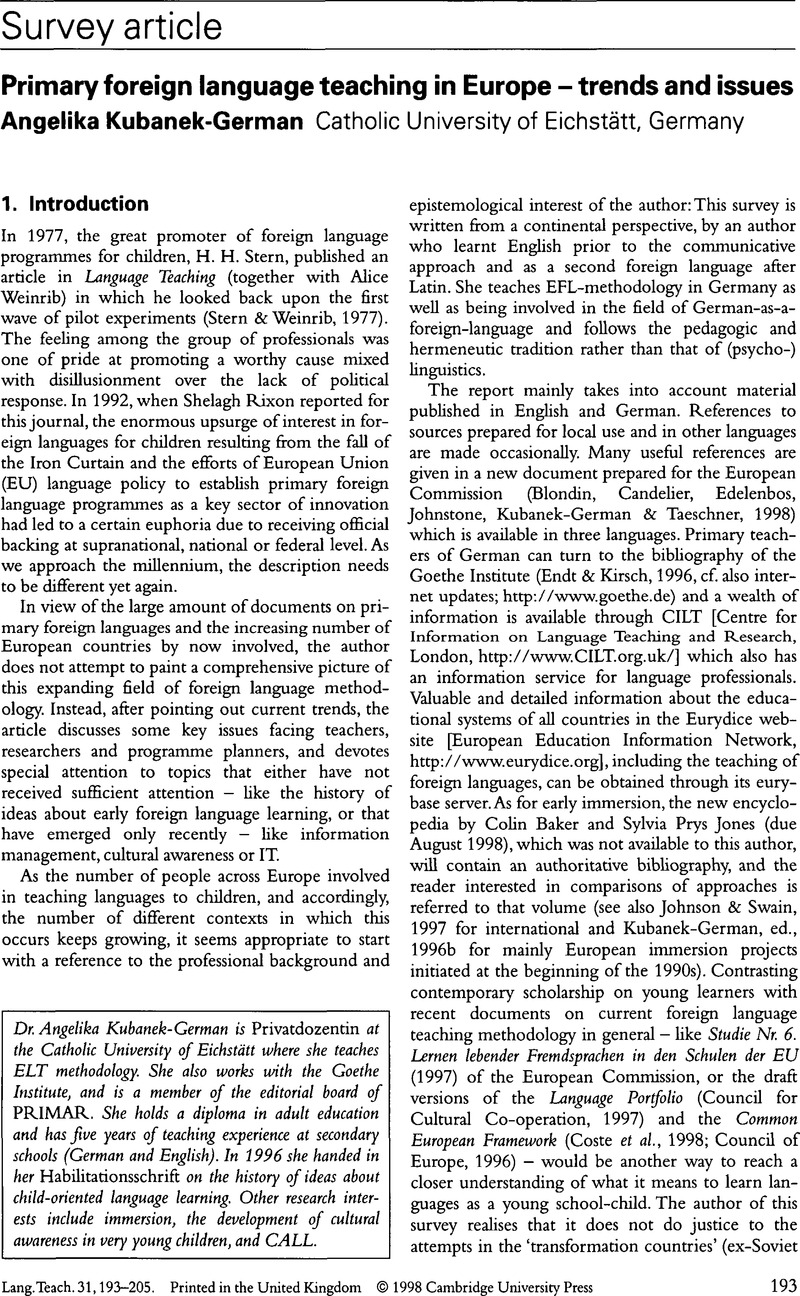Crossref Citations
This article has been cited by the following publications. This list is generated based on data provided by Crossref.
Edelenbos, Peter
and
Vinjé, Marja P.
2000.
The assessment of a foreign language at the end of primary (elementary) education.
Language Testing,
Vol. 17,
Issue. 2,
p.
144.
Mitchell, Rosamond
and
Lee, Jenny Hye-Won
2003.
Sameness and difference in classroom learning cultures: interpretations of communicative pedagogy in the UK and Korea.
Language Teaching Research,
Vol. 7,
Issue. 1,
p.
35.
Nikolov, Marianne
and
Djigunovic, Jelena Mihaljevic
2006.
RECENT RESEARCH ON AGE, SECOND LANGUAGE ACQUISITION, AND EARLY FOREIGN LANGUAGE LEARNING.
Annual Review of Applied Linguistics,
Vol. 26,
Issue. ,
Kolb, Annika
2007.
How Languages are Learnt: Primary Children's Language Learning Beliefs.
Innovation in Language Learning and Teaching,
Vol. 1,
Issue. 2,
p.
227.
Pinter, Annamaria
2007.
Some benefits of peer–peer interaction: 10-year-old children practising with a communication task.
Language Teaching Research,
Vol. 11,
Issue. 2,
p.
189.
Mihaljević Djigunović, Jelena
Nikolov, Marianne
and
Ottó, István
2008.
A comparative study of Croatian and Hungarian EFL students.
Language Teaching Research,
Vol. 12,
Issue. 3,
p.
433.
Kirsch, Claudine
2012.
Developing children's language learner strategies at primary school.
Education 3-13,
Vol. 40,
Issue. 4,
p.
379.
Bagheri, Mohammad Sadegh
Rahimi, Forough
and
Riasati, Mohammad Javad
2012.
Communicative Interaction in Language Learning Tasks among EFL Learners.
Journal of Language Teaching and Research,
Vol. 3,
Issue. 5,
Pfenninger, Simone E
and
Singleton, David
2016.
Affect trumps age: A person-in-context relational view of age and motivation in SLA.
Second Language Research,
Vol. 32,
Issue. 3,
p.
311.
Tetiurka, Małgorzata
2016.
Working with Text and Around Text in Foreign Language Environments.
p.
259.



